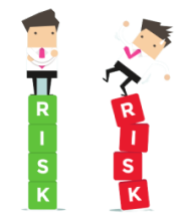The COSO Framework for Internal Control
April 3, 2025
 The COSO Framework for Internal Control
The COSO Framework for Internal Control
Internal frauds are a big part of the operational risk faced by any organization. This is truer of multinational companies who have business interests in various countries across the globe. This is because there are thousands of people in important positions making business decisions on behalf of the company. Hence, ensuring that all these employees…
 The Cost Structure in the Insurance Industry
The Cost Structure in the Insurance Industry
Insurance is one of the most regulated industries in the world. Also, there are multiple players which offer every type of insurance. As a result, the competitive pressures are very high. This ensures that the insurance companies are not able to charge exorbitant premiums. Almost every insurance company across the world is a price taker…
 Credit Derivatives: An Introduction
Credit Derivatives: An Introduction
Credit derivatives are the most important financial innovation in the field of credit risk management. These derivative instruments have been created quite recently. They have only been traded for a couple of decades as compared to other instruments like stocks and bonds which have been around for centuries. Within this short period of time, credit…
Various organizations have laid down principles for risk management. There are risk management principles by International standardization Organization and by Project Management Body of Knowledge.
The Project management body of knowledge (PMBOK) has laid down 12 principles. This article carries an amalgamation of both PMBOK and ISO principles. The various principles are:

Your email address will not be published. Required fields are marked *